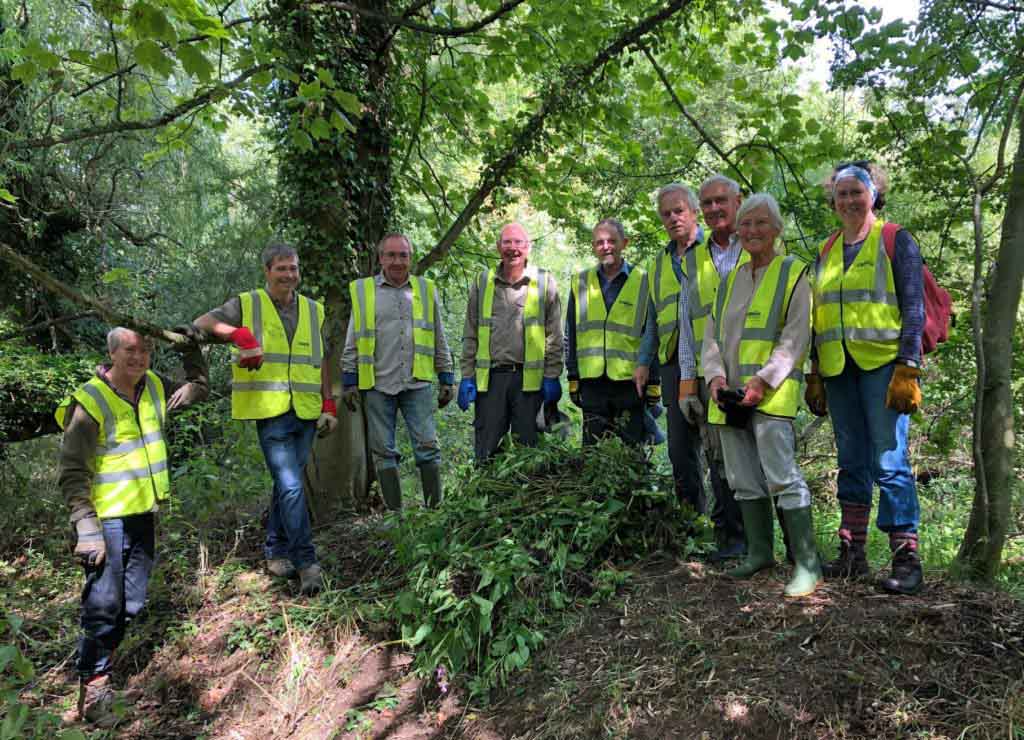Chiltern Society volunteers have been working with the Chilterns Chalk Streams Project this year to control two infestations of Himalayan Balsam along the River Gade and the River Misbourne.
Large stands of this plant have become established close to the sources of each river threatening to spread downstream if not controlled. Himalayan Balsam was introduced to Britain as a garden plant in 1839. It rapidly colonises riverbanks, developing into dense stands that kill off native plants and other flora. When it dies back in autumn, it leaves riverbanks bare and prone to erosion. Each plant can produce up to 2,500 seeds which can be transported by rivers to establish new colonies downstream.
Control of the infestation on the River Gade at Great Gaddesden is now in its third year and is close to being eradicated. Work to clear the stand on the Misbourne at Little Missenden began this year and is likely to take 5 years to eradicate. Ceri Groves, who is managing the control programme for the Chilterns Chalk Streams Project says, ‘It has been great to work with the Chiltern Society’s volunteers this year. Their assistance has been invaluable, contributing over 170 hours so far this year to help stop Himalayan balsam from spreading further.’
A final work party is being held on the 4th September to clear any remaining plants from the Gade. If you would like to take part in this work party or future events, please contact the Ceri Groves cgroves@chilternsaonb.org





